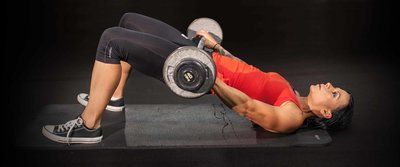It's been said that strength is the base of all athleticism. Before you are able to pick up an object for 30 repetitions or carry it for 100 meters, the logic goes, you first must be able to lift it once. Ipso facto, strength before all!
On the other hand, before you can lift that object even once, you have to be able to get into a safe position to lift it. Otherwise, someone might soon be picking you up, like the object you are, and carrying you to safety. That's why I say mobility before strength—and I mean it literally. Train mobility in the minutes leading up to your strength training, and you'll have better access to the strength in powerful areas like the hips, shoulders, and glutes.
I've heard the retort that lions don't warm up before they take down a zebra. True, but they aren't sitting at a desk all day either. Most of us have postural imbalances and tight tissues that need to be corrected. These are easy enough to ignore when we're at work, but they hold us back big-time when we train and compete. If you can't perform a movement correctly, then you're not getting better at that movement, plain and simple.
Don't let dysfunction win. Help your whole body feel and move better in just 10-15 minutes with these five simple, awesome warm-up drills.
Step 1. Hip Complex Foam Roll, 2-5 minutes
Whether with a foam roller, textured rumble roller, or lacrosse ball, this area needs to be hit hard. Begin prone (face-down on the ground), with the foam roller under your quad, and find the tightest and tenderest area in the belly of the muscle. Relax as you use your body weight to apply pressure for about 30 seconds.
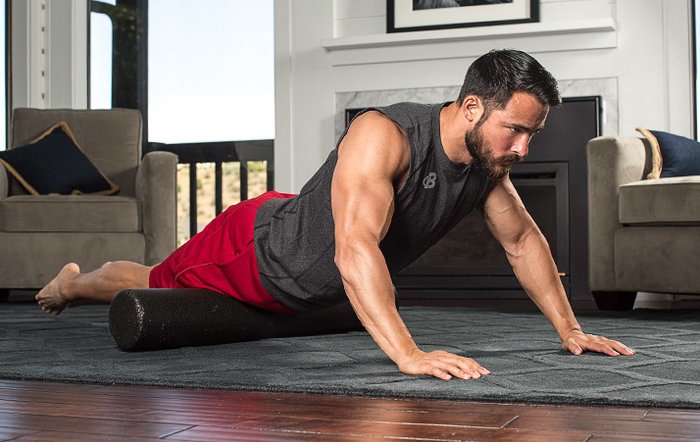
Foam Roll Quadriceps
Roll to the top of the leg and attempt to put pressure onto your hip flexors, which are located just inside of and below your hip bone. You may need to turn to the side slightly in order to gain access. Do the same thing here: Find the tenderest area and mash it.
After 30 seconds, roll onto the outside of your leg. Move your implement into the meat of your IT band and go through the same process. Then repeat the entire process for your other leg.
Step 2. Shoulder Foam Roll, 2-5 minutes
Do you look like a troll when you walk, with your shoulders slumped forward and internally rotated? If so, this will especially help you. Our shoulders are supposed to be mobile joints, but most of us have about as much range of motion as the Tin Man after a night standing in the rain.
Begin on your back with the roller or ball under the rear of the shoulder. Hit the posterior shoulder girdle, where the arm plugs into the upper back. Then roll down onto the ribs and smash your lat for a short time.
From here, work your way back up into the armpit. Any time you find something painful, stop there for at least 30 seconds.
Finally, roll over and smash the area where your chest meets your shoulder. A couple of minutes here can dramatically improve shoulder mobility. For fun, just do one side and then compare range of motion between your two arms by reaching overhead or behind your back.
Step 3. World's Greatest Stretch, 10 seconds in each position
Whoever came up for the title with this yoga-derived stretch was pretty bold. But with everyone from yoga instructors to elite NFL trainers now recommending it by name, the movement has earned your consideration. Lo and behold, it's pretty great, even if it's not exactly accurate to call it "a stretch." It's more like three stretches, but between them, you hit everything from your ankles to your lats.
There are a few other variations of this stretch you can progress toward once you're confident, including one with thoracic rotation similar to a T-push-up during the middle lunge. Until then, the basic version can do you a lot of good.
Step 4. Glute Bridge, 20 reps
First off: Make sure that when you do these, you wear stretchy pants. Also make sure that you situate yourself somewhere where you're able to watch your form in a mirror. Got it? Good.
The glute bridge is going to do a couple things for you right off of the bat. First, it's going to help you activate the hamstrings and glutes with a few powerful contractions, so they're ready to work hard while you train.
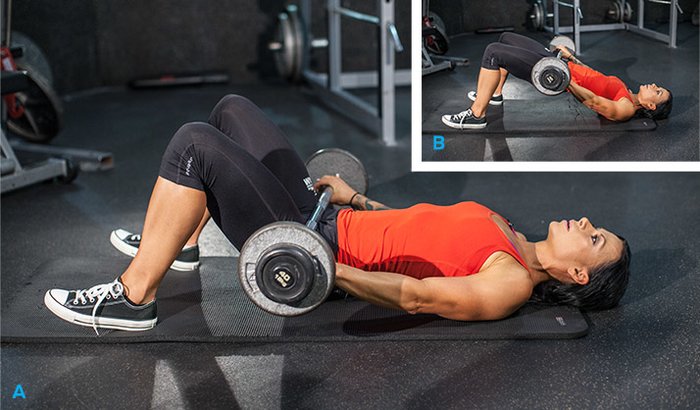
Barbell Glute Bridge
I know some people say that "activate" is a misnomer here, because your glutes couldn't be inactive if you're physically able to achieve the hip extension at the top of a glute bridge. I get it, but I don't think it's an effective argument against the movement.
By doing glute bridges, we warm up an area that is directly tied to muscular power and our ability to put it into action. It gets us thinking about them, establishing that mind-muscle connection.
Also, the movement works as an active stretch for the anterior hip. If step one of our warm-up didn't make it clear, the front side of the hip is a problem area for the majority of the population.
Step 5. Burpee Box Jump, 10 reps
The burpee will serve as a good general warm-up, especially with a little plyometrics included. However, most people only jump about two inches off the ground when doing a burpee.
You aren't going to get much benefit from a jump that wouldn't clear a rope, so I prefer to jump to a box. It doesn't have to be high; you're warming up, not showing off. Just jump to something.
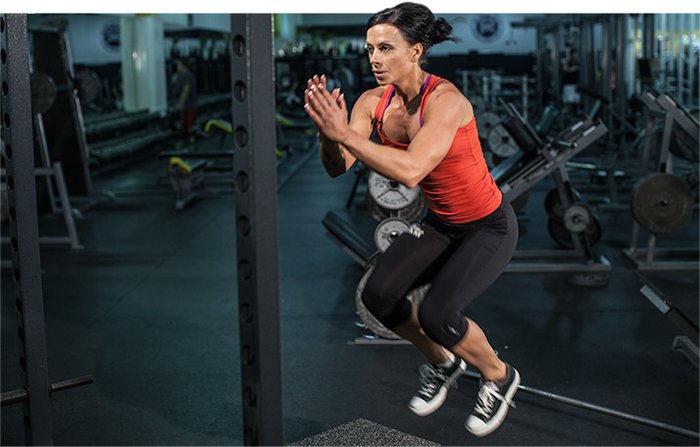
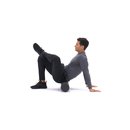
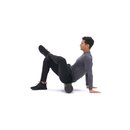

BodyFit
$6.99/month- 2,500+ expert-created single workouts
- 3,500+ how-to exercise videos
- Detailed workout instruction
- Step-by-step workout tips
- Training at gym or at home
- Access to Workout Plans
- Access to Bodyfit App
- Store Discounts
Already have a Bodybuilding.com account with BodyFit? Sign In

What comes with BodyFit?

- Instructional Videos
Don't risk doing a workout improperly! Avoid injury and keep your form in check with in-depth instructional videos.

- How-to Images
View our enormous library of workout photos and see exactly how each exercise should be done before you give it a shot.

- Step-by-Step Instructions
Quickly read through our step-by-step directions to ensure you're doing each workout correctly the first time, every time.


